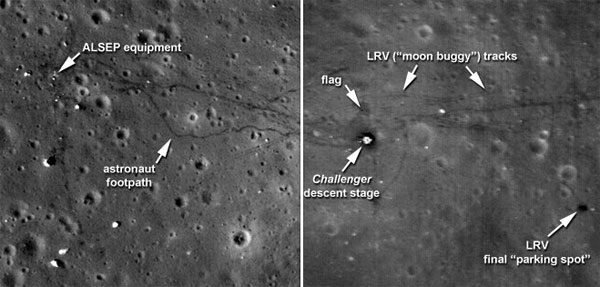

It’s not lost on us that this could be a massive benefit to espionage in general, too. Putting all that electronic junk in with your junk might just make the job easier. They’re saying that people on sensitive missions, like arms inspections, are often so laden with electronics that it’s hazardous for them to negotiate ladders and catwalks in industrial facilities where arms-control treaty violations are likely to occur. The popular press is all over the “surveillance undies” thing, and understandably so - who wants sensors built into a garment in such close contact with your most private areas? But if you read into it a bit, the idea starts to make sense, at least how IARPA - the intelligence community’s answer to DARPA - is pitching it. We had to check the calendar on this one to make sure we hadn’t Rip van Winkle-d all the way to the next March-April interface before diving into this one: US spooks are spending $22 million to develop “smart underwear.” They’ve even got a cool acronym - “Smart Electrically Powered and Networked Textile Systems,” or Smart ePANTS. So maybe that’s AI’s grand plan for humanity - just give us all really bad advice and let Darwin take care of the rest. Trouble is, when half a Death Cap contains enough toxin to kill an adult human, the margin for error is much narrower than what AI is likely to include in a foraging manual. The classic example is the Death Cap mushroom ( Amanita phalloides) which varies quite a bit in identifying characteristics like color and size, enough so that it’s often tough for expert mycologists to tell it apart from its edible cousins. That may not be such a big deal when the subject matter concerns stamp collecting or needlepoint, but when it concerns differentiating edible fungi from toxic ones, that’s a different matter. It seems that Amazon is filled with publications these days that do a pretty good job of looking like they’re written by human subject matter experts, but are actually written by ChatGPT or similar tools.
#Who sees lunar reconnaissance orbiter photos first manuals#
But for those of you thinking we’ll get off relatively easy with a quick nuclear armageddon, we’re sorry to bear the news that AI seems to have other plans for us, at least if this report of dodgy AI-generated mushroom foraging manuals is any indication. We’ve all seen that movie, of course, and know exactly what will happen when SkyNet becomes self-aware. However, “dark” in this case is referring to unknown, rather than a lack of light.Most of us probably have a vision of how “The Robots” will eventually rise up and deal humanity out of the game. This side we never see is known as the “far side of the Moon.” Sometimes it is called the “dark side of the Moon,” which some people consider a misnomer because it gets just as much sunlight as the near side of the Moon. In fact, humans didn’t see the lunar far side until a Soviet spacecraft flew past in 1959.

Because of this, people on Earth only ever see one side of the Moon.

The Earth and Moon are tidally locked, which means that the Moon spins on its axis exactly once each time it orbits our planet. Orion uses the optical navigation camera to capture imagery of the Earth and the Moon at different phases and distances, providing an enhanced body of data to certify its effectiveness under different lighting conditions as a way to help orient the spacecraft on future missions with crew. During the close flyby, Orion’s optical navigation camera captured black-and-white images of craters on the Moon below. On the sixth day of the Artemis I mission, Orion made a close flyby of the Moon, passing about 81 miles (130 km) above the surface. The spacecraft entered the lunar sphere of influence on Sunday, November 20, making the Moon, instead of Earth, the main gravitational force acting on the spacecraft. The spacecraft was preparing for the Outbound Powered Flyby maneuver which would bring it within 80 miles of the lunar surface, the closest approach of the uncrewed Artemis I mission, before moving into a distant retrograde orbit around the Moon. The Earth is seen setting from the far side of the Moon just beyond the Orion spacecraft in this video taken on the sixth day of the Artemis I mission by a camera on the tip of one of Orion’s solar arrays.


 0 kommentar(er)
0 kommentar(er)
